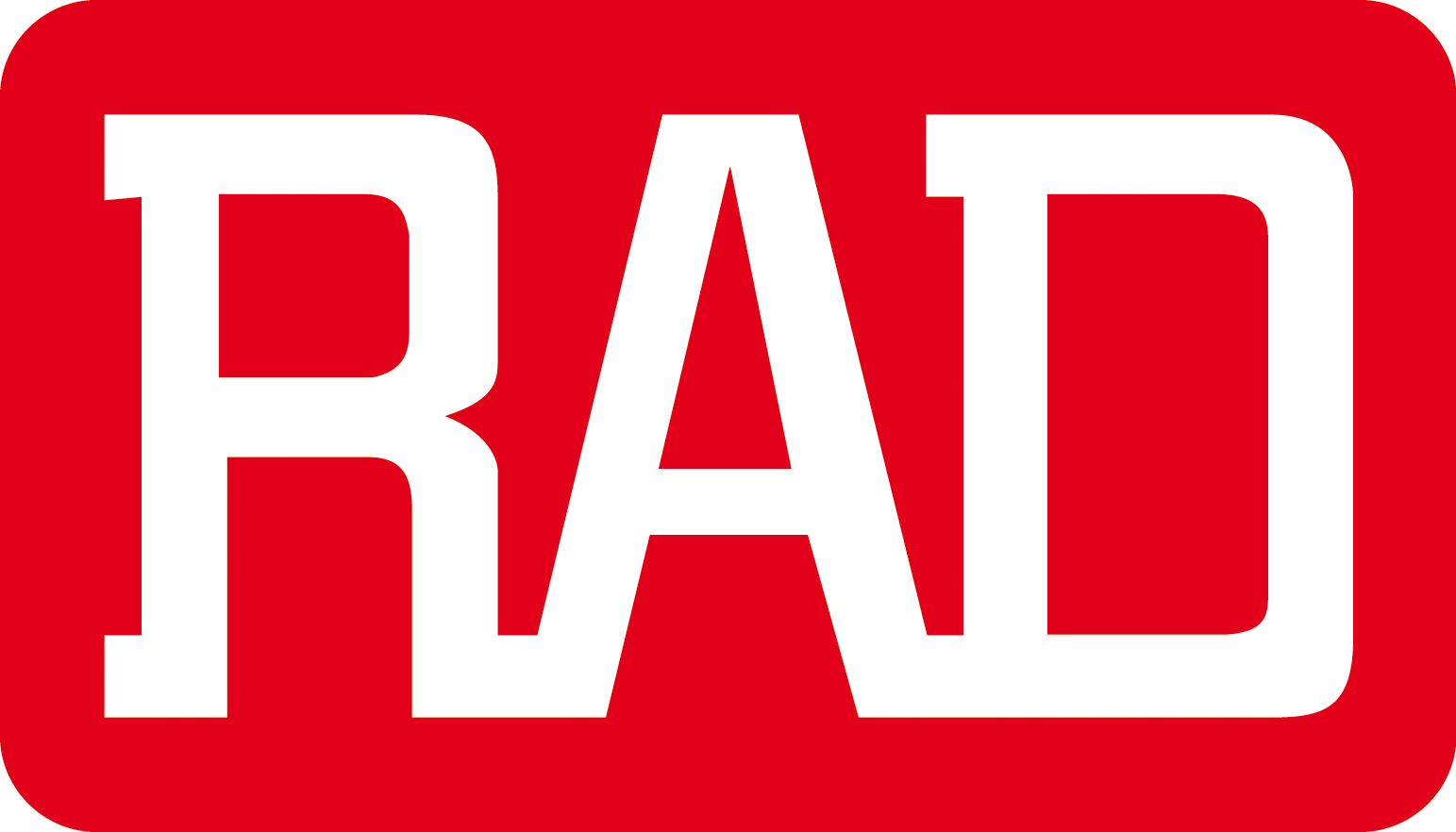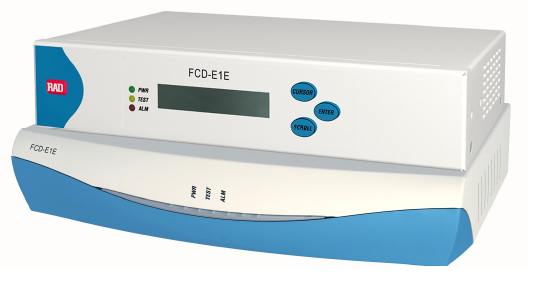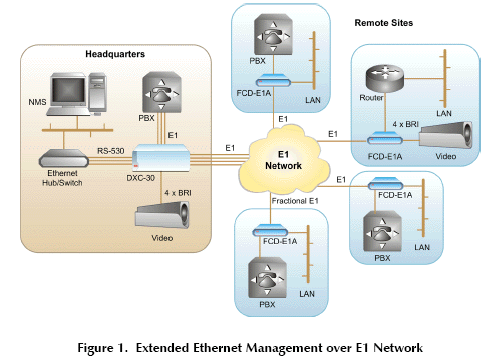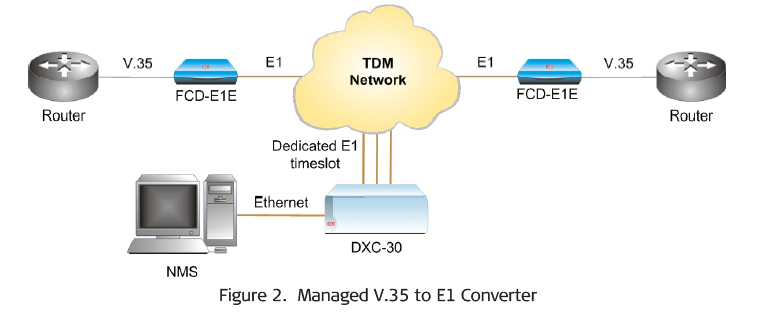




FCD-E1E TDM multiplexer enables Ethernet, Sub-E1 and Serial Services over E1

FCD-E1E from RAD is a managed access unit that converts rates and interfaces for E1 and
fractional E1 services. FCD-E1E features a serial n × 64 kbps data user interface, and/or an Ethernet LAN
interface to allow LAN-to-LAN connectivity over TDM media. The RAD FCD-E1E interconnects with
RAD’s modular DXC (DACS) products and E1 equipment from other vendors, to support multilink
star applications such as access to SDH networks, FCD, and Megaplex units. The E1 interface is compatible with
virtually all carrier-provided E1 services and meets ITU recommendations G.703, G.704, G.706, G.732, G.823, and G.826.
It supports both 2 and 16 frames per multiframe, with or without CRC-4. The E1 interface also accepts a 2048-kbps data
stream and converts it to an ITU-T Rec. G.703 unframed signal for transport over
the E1 main link and sublink. Line code is HDB3/AMI. The integral LTU ensures a range of up to 2 km (1.2 miles) and is
software selectable.
The FCD-E1E optional sub-E1 port can be configured to work without CRC-4, while the E1 main link is working with CRC-4.
E1 equipment not supporting CRC-4 can thus connect to an E1 network that does work with CRC-4.
Bypassing the sub-E1 port to the main link ensures uninterrupted service to the sub-E1 port and full immunity to hardware
and power failure. The RAD FCD-E1E can be configured to assign data from the data port into consecutive
timeslots or the user can assign timeslots manually. Multiple clock source selection ensures
maximum flexibility. Timing for the E1 main link and sublink may come from the recovered receive clock, an internal
oscillator, or the data port. An optional 10/100BaseT Ethernet port can be ordered for management, with or
without bridge functionality.
Note: The devices originally ordered with management only functionality (/UTPM) can be
upgraded to the /UTP (bridge and management) functionality by ordering a special software license
key (see Ordering).
Front-panel LEDs indicate power, alarms, and diagnostic loopback operation. Rear
panel LEDs on the E1 interfaces indicate local and remote sync loss. Rear-panel LEDs on the optional Ethernet port
indicate link integrity and activity. FCD-E1E is available in two models:
• Plastic enclosure (FCD-E1E)
• Metal enclosure with LCD and push-buttons on the front panel (FCD-E1E/L).
Both enclosures can be mounted alone or in pairs in a 19-inch rack using RAD’s
optional rack mount kits (see Ordering).

RAD FCD-E1E user interfaces
The FCD-E1E unit features the following user interfaces:
• Serial data interfaces: V.24/RS-232, V.35, V.36/RS-449, RS-530, X.21
• Ethernet 10/100BaseT LAN interface. The synchronous data ports of FCD-E1E operate in the following clock modes:
DCE: FCD-E1E provides both transmit and receive clocks to the user equipment, with optional sampling of
the incoming data with an inverted clock
DTE1: FCD-E1E provides the receive clock, while the transmit clock is provided by the attached user
equipment (not for X.21 and V.24)
DTE2: The remote user equipment provides both transmit and receive clocks (not for X.21 and V.24).
The optional bridge port is a standard 10/100BaseT half/full-duplex port featuring
auto-negotiation and automatic crossover support. Its interface supports VLAN frames, automatic
learning and aging. The bridge port transparently connects FCD-E1E to remote LANs over E1
links. It filters Ethernet frames and forwards only frames that are destined for
the WAN.
FCD-E1E Management and maintenance
Status and diagnostic information is defined, configured, and monitored using any of the following methods:
Menu-driven management using the front panel LCD with three pushbuttons (metal enclosure only)
ASCII terminal connected to the async control port
Telnet (only with optional Ethernet port)
RADView element manager (only with optional Ethernet port).
Up to 2048 time-stamped alarms can be retrieved through the supervision terminal.
Maintenance capabilities include user-activated local and remote loopbacks on the E1 main link, sublink, and data port.
The user can activate a BER test on the main link or sublink. E1 network statistics are stored in
memory, according to IETF RFC4805. Statistical information can be retrieved locally through the control port.
FCD-E1E performs VLAN tagging and priority labeling according to IEEE 802.1p&Q (enhanced QoS, supporting
strict/weighted fair queue mechanism, with 802.1p/DSCP/IP Precedence priority). The unit performs rate limiting (egress and
ingress).

FCD-E1E product data sheet (pdf)